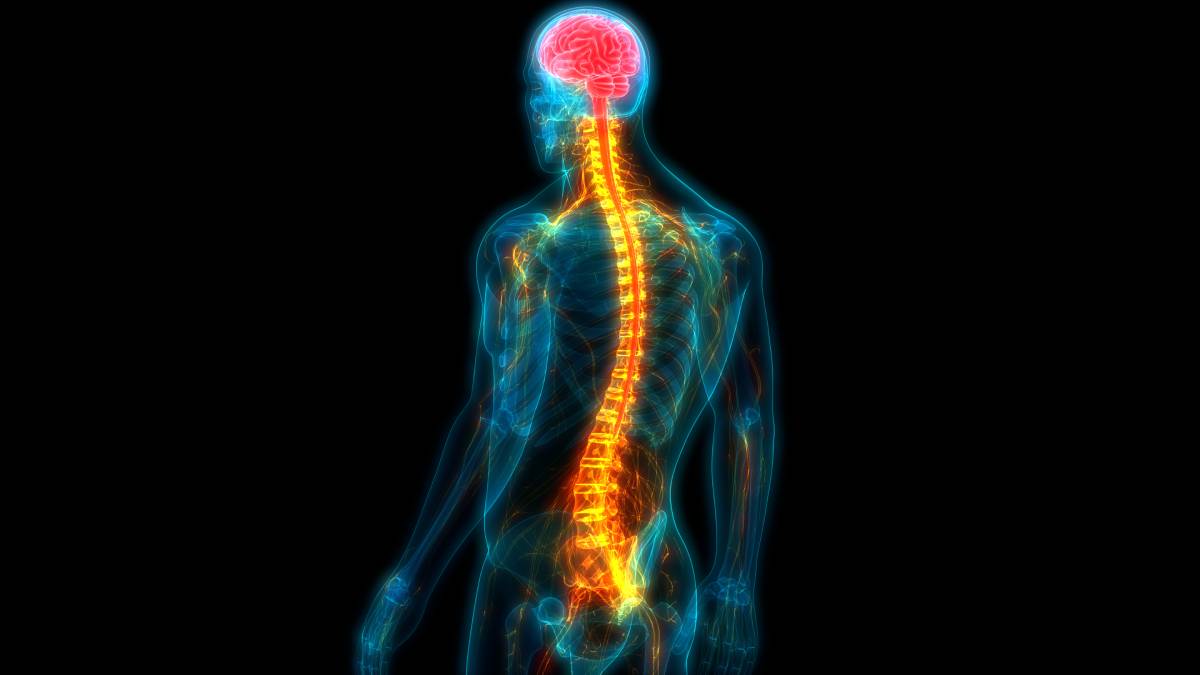Asymmetry in body dimensions is not the exception but the norm for humans, and random deviations from perfect symmetry are to be expected (Einas, 2004). Depending on the type and degree of asymmetry, however, some individuals may develop spinal conditions that cause back pain and require intervention. Kyphosis, scoliosis, and spinal stenosis are three common conditions involving abnormal curvature of the spine. Other factors that researchers have found to contribute to lower back pain include asymmetry of the lower limbs, such as discrepancy in leg length (Einas, 2004).
Back conditions can be either acute or chronic. Acute back pain, such as that resulting from sprains, strains, and spasms, is short-term and tends to resolve with self-care within a few days, weeks, or months. Chronic back pain, on the other hand, is pain that continues for longer than 12 weeks and is more difficult to treat. An estimated 20.4 percent of all adults experience chronic back pain (Dahlhamer et al., 2016) and about 20 percent of acute cases develop into chronic issues (NINDS, 2020). While chronic low back pain is sometimes successfully treated, it may persist in some patients despite medical and surgical treatment.
Kyphosis is a forward rounding, or “hunching”, of the upper back that most often occurs in older women. Though mild kyphosis may not be a cause for concern, severe cases can affect the lungs, nerve roots, tissues, and other internal organs, in which case surgery may be needed to permanently join two or more vertebrae and reduce the degree of curvature (Cleveland Clinic, 2020). Though osteoporosis-related factors and degenerative diseases of the muscles are primary causes, hyperkyphosis may be induced by a variety other factors such as habitual poor posture (Wendy et al., 2010).
Scoliosis is a lateral, rather than forward, curvature of the spine into an “S” or “C” shape. It most often occurs at a young age just before or during puberty, and while most cases are mild, some adolescents develop spinal deformities that increase in severity as they grow. Though the causes of scoliosis are still not entirely known, one prominent hypothesis is that changes during the growth process in the womb contribute to scoliosis present at birth. In older children and adolescents, scoliosis may be brought about by diseases such as cerebral palsy and muscular dystrophy (Janicki et al, 2007). In adults, osteoporosis and forms of arthritis can weaken the spine, leading to misalignment and potentially scoliosis. More recently, researchers have identified, through a defect in CHD7, a genetic link to scoliosis in cases where there is no other definite cause (Washington University in St. Louis, 2007). Further steps in understanding the genetic basis of the condition may allow doctors to identify those who are predisposed and intervene before the deformity develops.
Unlike scoliosis, which generally appears in children, spinal stenosis usually occurs later in life as the vertebrae change with age. It is characterized by a narrowing of the spine that subsequently puts pressure on the spinal cord or nerves, causing pain or weakness in the back, neck, or shoulders. Though most cases of spinal stenosis produce bilateral symptoms, asymmetrical pressure on nerves can result in symptoms being more severe on one side of the body (Munakomi, 2020). Primary causes of spinal stenosis include osteoarthritis of the spine and spondylosis, a type of arthritis spurred by repetitive stress. Injuries, tumors, and other diseases may also be causes. Additional factors that contribute to stenosis of the spinal canal include lumbar disc degeneration and asymmetrical disc bulging, which occurs when the soft center of a disc between the bones that make up the vertebrae pushes through the exterior casing.
Though back asymmetries can often be treated with surgery or noninvasive methods such as chiropractic and physical therapy, other cases are more difficult to treat and tend to result in chronic pain. It is important to realize, however, that the persistence of pain does not necessarily mean there is a medically serious underlying cause (NINDS, 2020). Oftentimes, simple changes to one’s diet, lifestyle, and stress management may help alleviate a variety of back-related symptoms.
References
Al-Eisa E, et al. “Fluctuating Asymmetry and Low Back Pain.” Evolution and Human Behavior, Volume 25, Issue 1, 2004, 31-37, ISSN 1090-5138, http://www.sciencedirect.com/science/article/pii/S1090513803000813.
Dahlhamer J, Lucas J, Zelaya, C, et al. “Prevalence of Chronic Pain and High-Impact Chronic Pain Among Adults — United States, 2016.” Center for Disease Control and Prevention (MMWR Morbidity and Mortality Weekly Report), 2018, 67:1001–1006, https://www.cdc.gov/mmwr/volumes/67/wr/mm6736a2.htm.
Janicki J, Alman B. “Scoliosis: Review of Diagnosis and Treatment.” Paediatrics & Child Health, 2007, vol. 12,9: 771-6, https://www.sciencedaily.com/releases/2007/06/070614100445.htm.
Katzman W, et al. “Age-Related Hyperkyphosis: Its Causes, Consequences, and Management.” The Journal of Orthopaedic and Sports Physical Therapy, 2010, vol. 40,6: 352-60, https://www.ncbi.nlm.nih.gov/pmc/articles/PMC2907357/.
“Low Back Pain Fact Sheet”. National Institute of Neurological Disorders and Stroke (NINDS), 2020, No. 20-NS-5161, https://www.ninds.nih.gov/Disorders/Patient-Caregiver-Education/Fact-Sheets/Low-Back-Pain-Fact-Sheet.
Munakomi S, Foris LA, Varacallo M. “Spinal Stenosis and Neurogenic Claudication.” StatPearls, 2020. https://www.ncbi.nlm.nih.gov/books/NBK430872/.
“Spondylolisthesis.” Cleveland Clinic, 2020, https://my.clevelandclinic.org/health/diseases/10302-spondylolisthesis.
Washington University in St. Louis. “First Gene Linked To Scoliosis Identified.” ScienceDaily, 15 June 2007, www.sciencedaily.com/releases/2007/06/070614100445.htm.
